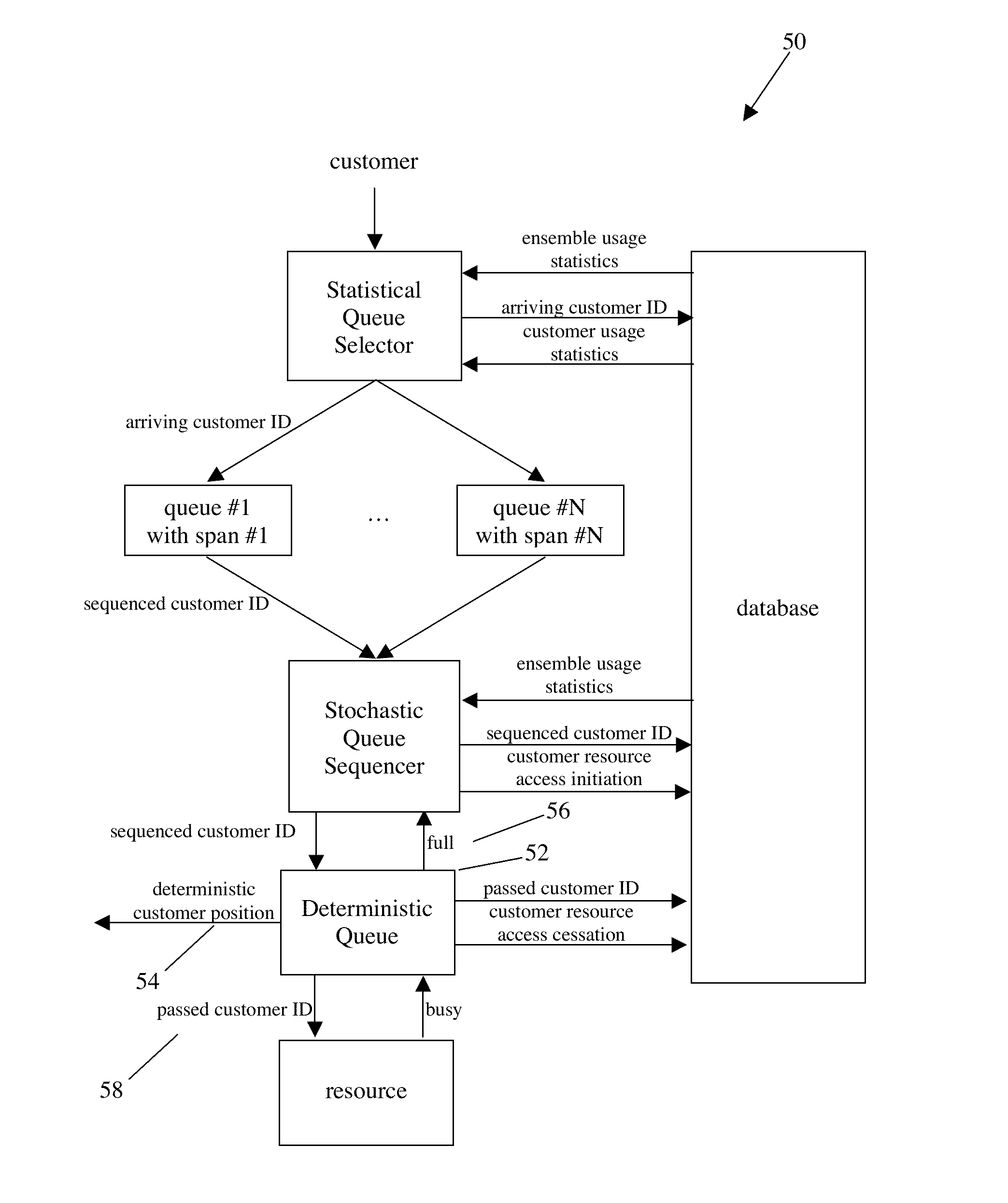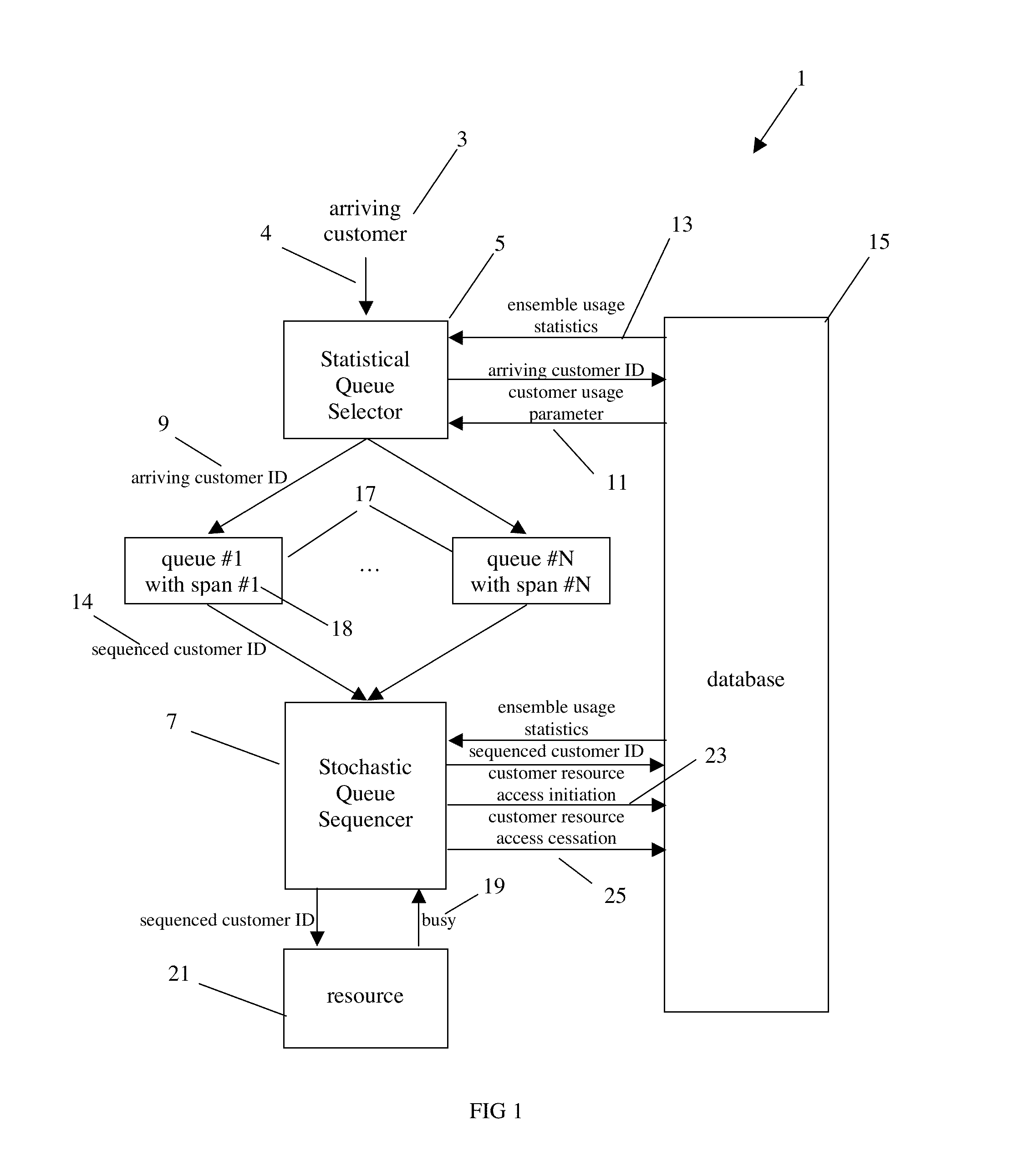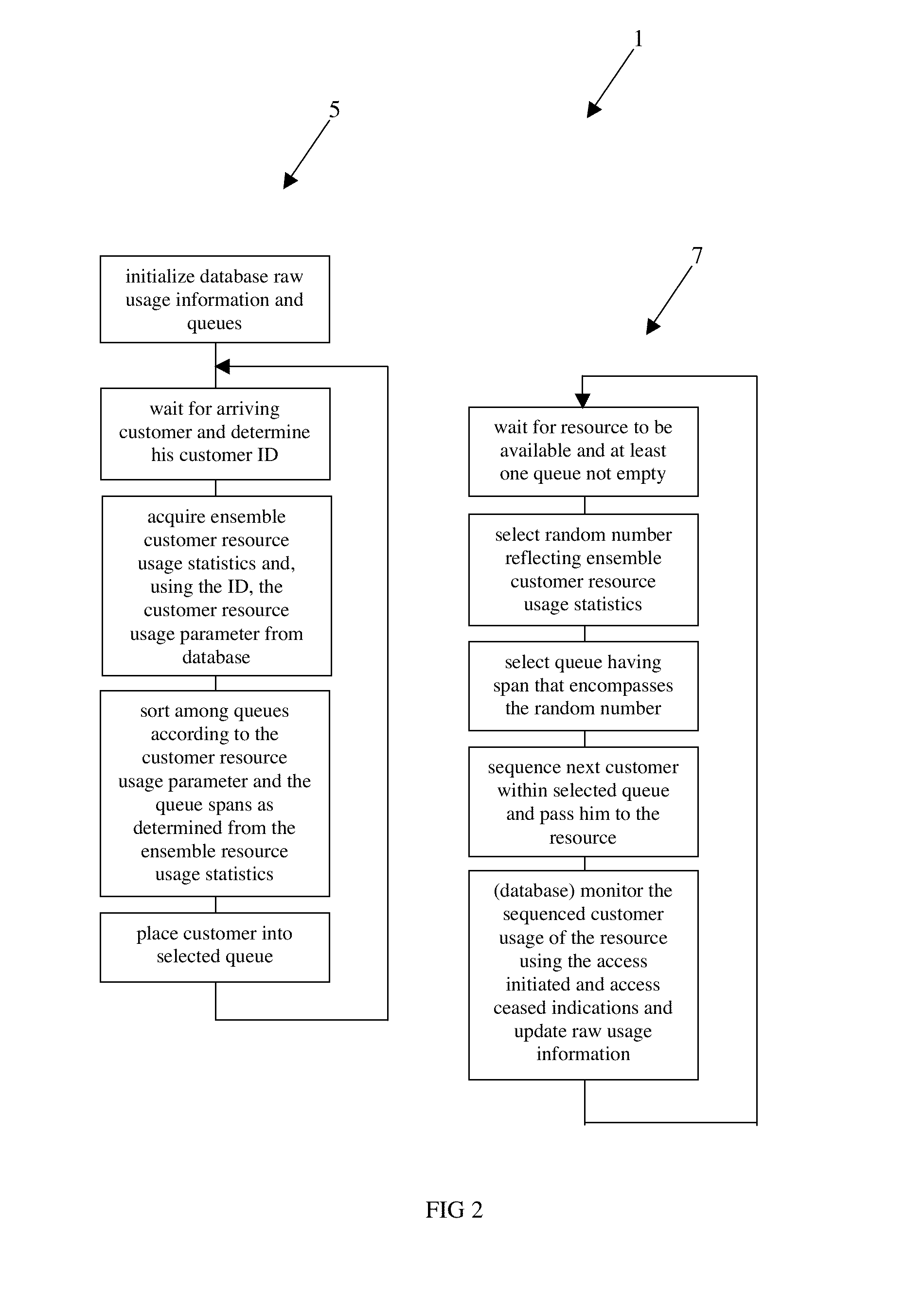Adaptive Stochastic Queueing
a stochastic and queueing technology, applied in the field of adaptive stochastic queueing, can solve the problems of difficult to adequately support other customers without adding resources and personnel, and the distribution of resources is not free, and the volume of resources is significant beyond that of the normal customer population
- Summary
- Abstract
- Description
- Claims
- Application Information
AI Technical Summary
Benefits of technology
Problems solved by technology
Method used
Image
Examples
Embodiment Construction
[0037]The preferred embodiment of Adaptive Stochastic Queueing 1 is illustrated in FIG. 1 and FIG. 2. Customers 3, requesting access to resource 21, arrive and the Statistical Queue Selector 5 sorts them into one of a plurality of queues 17 while a Stochastic Queue Sequencer 7 sequences customers from the queues and passes them to the resource for access. A database 15 supports these functions.
[0038]Initializer: The database 15 raw usage information 62 is initialized using a priori estimates or historical information, and a plurality of queues 17 are initialized. Examples of the raw usage information 62 and the queues are included below.
[0039]Statistical Queue Selector: The Statistical Queue Selector 5, as arriving customer 3 requests resource 21 access, identifies the arriving customer using contact information included in his request link 4 and determines the arriving customer ID 9. The arriving customer ID is used to read his customer resource usage parameter 11 from the database...
PUM
 Login to View More
Login to View More Abstract
Description
Claims
Application Information
 Login to View More
Login to View More - R&D
- Intellectual Property
- Life Sciences
- Materials
- Tech Scout
- Unparalleled Data Quality
- Higher Quality Content
- 60% Fewer Hallucinations
Browse by: Latest US Patents, China's latest patents, Technical Efficacy Thesaurus, Application Domain, Technology Topic, Popular Technical Reports.
© 2025 PatSnap. All rights reserved.Legal|Privacy policy|Modern Slavery Act Transparency Statement|Sitemap|About US| Contact US: help@patsnap.com



